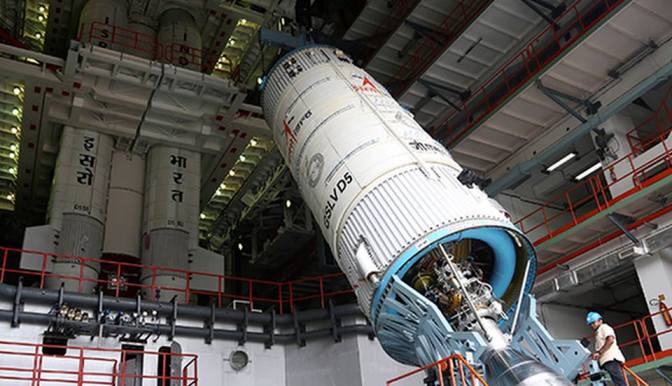Telecommunications and broadcasting will get a boost as GSAT-14 satellite is set to go live soon.
The countdown for the GSLV-D5 rocket launch kicked off at 11.50 am on Sunday.
Twenty-nine hours later, at 4.50pm on Monday, the rocket carrying telecom satellite GSAT-14 will lift off from Sriharikota, 100 km north of Chennai, Tamil Nadu, India.
GSAT-14, which weighs 1,982kg, will be used for telecast and telecommunication.
The success of GSLV is important for India as a lot of Isro’s future projects, including the proposed Human Spaceflight will need a platform with its capabilities.
GSAT–14 satellite with 6 Extended C band and 6 Ku band transponders is envisaged to enhance communication transponder capacity. The satellite employs the standard 2000 Kg class bus (I–2K) with a power handling capability of around 2.5 KW and a lift-off mass of 1980 kg.
The use of an indigenous cryogenic engine as the upper stage is significant for India. Indian space science is waiting at the threshold of a new phase of mega satellite launch.
India’s attempt to use an indigenous cryogenic engine on April 15, 2010 to power GSLV-D3 failed.
With only one more Russian cryogenic engine left in the ISRO arsenal, success of the indigenous technology using oxygen and hydrogen in extreme low temperatures as the fuel will propel several big ticket future missions including a manned project to space, Times of India reported.
ISRO senior scientists led by ISRO chairman K Radhakrishnan are monitoring GSLV-D5.
India needs cryogenic engines to launch GSLVs that can carry payloads weighing more than three tonnes, which hold the key to future of telecommunication and space exploration. GSLV-D5 weighs 414 tonnes.
Since 1994, India has had 23 consecutive successes with the Polar Sateliite Launch Vehicles (PSLVs), an improvised version of which was used for Chandrayaan-1 in August 2009.
However, PSLVs can carry only payloads weighing up to 1.5 tonnes to a geosynchronous transfer orbit (a highly elliptical orbit with the nearest point to each about 200km and the farthest 42,00 km) , and up to 3.5 tonnes to a low earth orbit of about 200km from earth.
GSLV can carry payloads weighing 2.5 tonnes to a geosynchronous transfer orbit, and up to 5 tonnes to a low earth orbit.






